House sparrows may be small, but they can cause significant problems for homeowners and businesses. These invasive birds damage property, displace native bird species, spread diseases, and create unsightly messes with their droppings and nesting materials. This comprehensive guide covers the most effective methods how to get rid of sparrows and prevent them from returning to your property.
Quick Picks: Best Sparrow Control Products
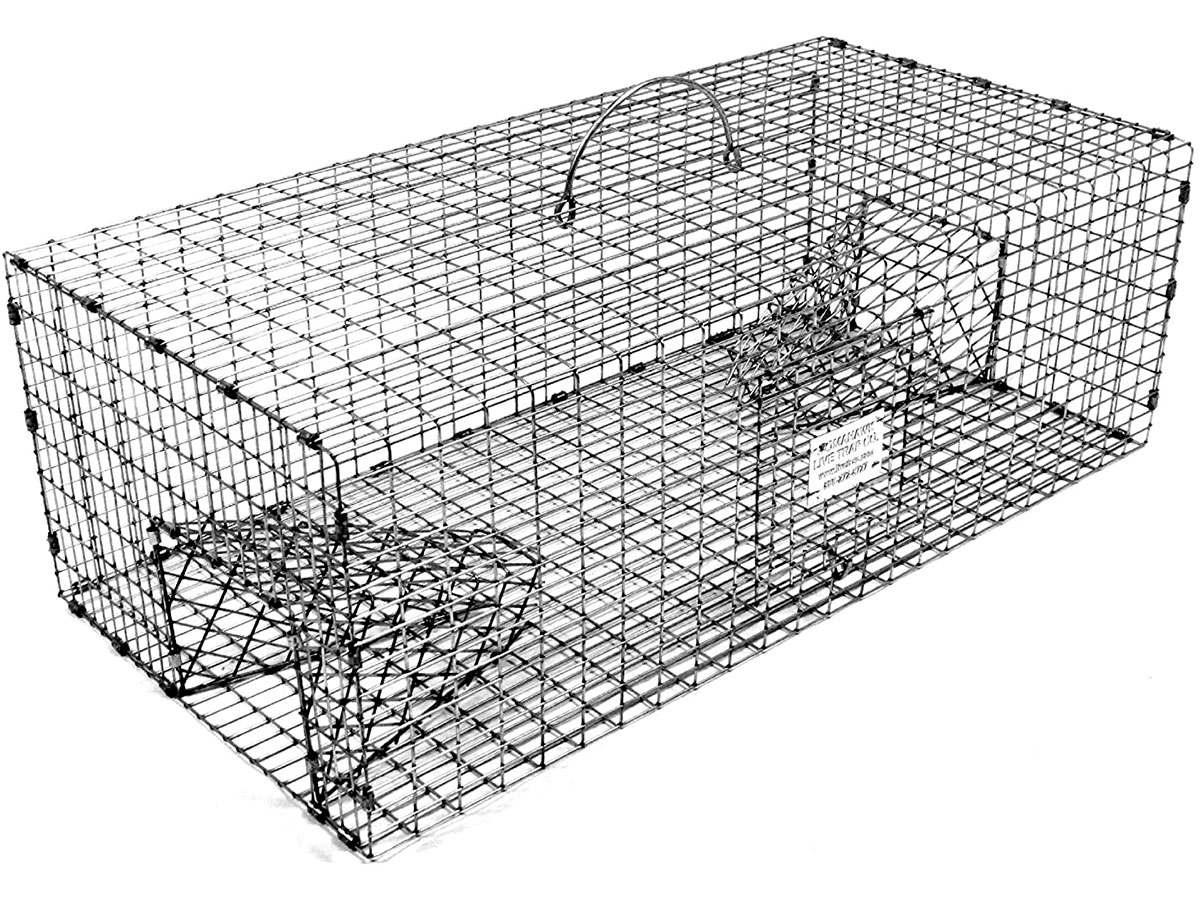
Best Trap
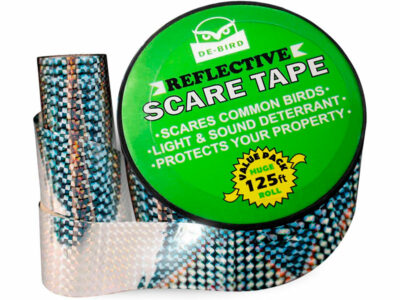
Best Deterrent
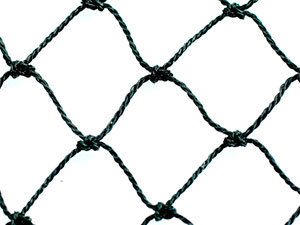
Best Prevention
Understanding House Sparrows: Know Your Enemy
Before attempting to control sparrows, it’s essential to understand their behavior and why they’ve become such a persistent problem. House sparrows (Passer domesticus) are non-native invasive birds that were introduced to North America in the 1850s and have since spread throughout the continent.
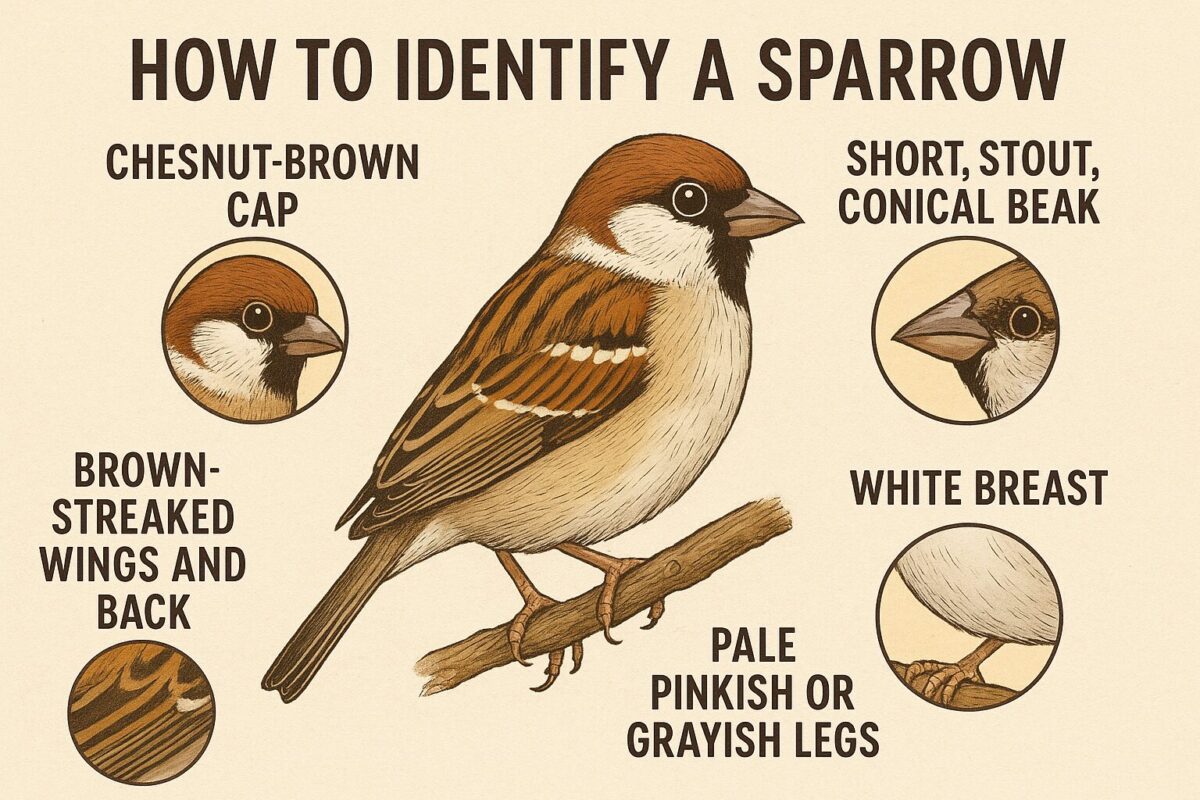
Why House Sparrows Are a Problem
Property Damage
Sparrows build messy nests in vents, gutters, and building crevices, causing blockages and fire hazards.
Native Bird Displacement
They aggressively compete with native bird species for nesting sites, often killing other birds and their young.
Disease Transmission
Sparrows can carry and transmit over 25 diseases to humans and livestock, including salmonellosis and histoplasmosis.
Crop Damage
They consume and contaminate livestock feed and damage crops and gardens, causing economic losses.
House Sparrow Identification
- Size: 5-6 inches long, stocky build
- Coloration: Males have gray crowns, chestnut-colored backs, black bibs, and white cheeks; females are dull brown with streaked backs
- Behavior: Highly social, noisy, and aggressive; often seen in large flocks
- Nests: Messy constructions of grass, twigs, paper, and other debris; dome-shaped with side entrance
How to Get Rid of Sparrows – 7 Effective Methods
Successful sparrow control typically requires a combination of approaches. Here are seven proven methods to eliminate sparrow problems from your property: In addition to traditional methods like trapping and exclusion, it’s essential to maintain a clean environment to reduce food sources that attract sparrows. Furthermore, employing visual deterrents can help discourage these birds from nesting in unwanted areas. Understanding how to deter crows effectively can also play a role, as their presence can sometimes intimidate smaller birds like sparrows, leading to a more balanced ecosystem on your property.
1. Exclusion Methods: Prevent Access
Physically blocking sparrows from accessing nesting and roosting sites is one of the most effective long-term control strategies. By denying access to your buildings and structures, you can prevent sparrows from establishing themselves on your property.
Bird Exclusion Netting
Best PreventionHow Does It Work
How to Use
- Measure the area requiring protection and add extra material for secure mounting
- Install the netting tautly to prevent birds from pushing through or getting tangled
- Secure all edges with appropriate hardware (clips, ties, or tension cable)
- Ensure there are no gaps larger than 1/2 inch where birds might enter
- For best results, install before sparrow nesting season begins
- Provides complete physical exclusion
- Long-lasting solution (5+ years with proper installation)
- Effective against all bird species
- Humane approach that doesn't harm birds
- More labor-intensive to install than other methods
- May affect the appearance of buildings
- Requires periodic inspection and maintenance
- Not suitable for all architectural situations
Additional Exclusion Techniques
- Vent Covers: Install stainless steel mesh covers over vents, soffits, and other openings.
- Gap Sealing: Use caulk or expandable foam to seal gaps and crevices larger than 3/4 inch.
- Bird Spikes: Install on ledges, windowsills, and other flat surfaces where sparrows perch.
- Angled Barriers: Create 45-degree angle barriers on flat surfaces to prevent roosting.
2. Visual Deterrents: Scare Tactics
Visual deterrents exploit sparrows’ natural fear response to create an environment that seems unsafe, encouraging them to find new locations to nest and feed.
Bird Scare Reflective Tape
Best DeterrentHow Does It Work
How to Use
- Cut strips 2-3 feet in length
- Attach one end securely while allowing the strip to move freely
- Space strips 3-6 feet apart in the affected area
- Place in locations that receive good sunlight for maximum effect
- Replace periodically as strips become weathered or lose reflectivity
- Inexpensive and easy to install
- No harm to birds or environment
- Works immediately with no adjustment period
- Effective against multiple bird species
- Effectiveness decreases over time as birds become habituated
- Less effective on cloudy days or in areas with limited sunlight
- May be considered visually unappealing in some settings
- Requires periodic repositioning to maintain effectiveness
Other Effective Visual Deterrents
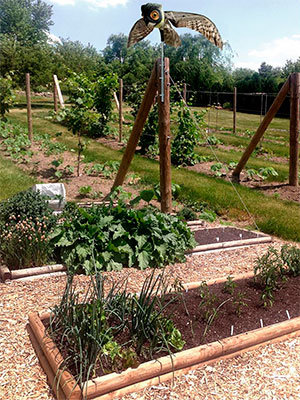
Predator Decoys
- Realistic owl, hawk, or falcon models
- Motion-activated or moving versions most effective
- Must be relocated frequently to prevent habituation
- Works best when combined with other deterrents
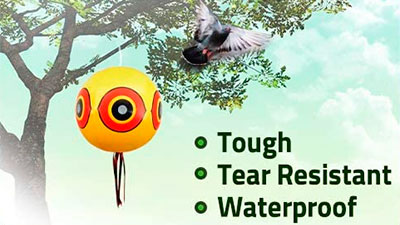
Scare Eye Balloons
- Predator eye patterns trigger fear response
- Movement in wind enhances effectiveness
- Inexpensive and easy to deploy
- Best used in combination with sound deterrents
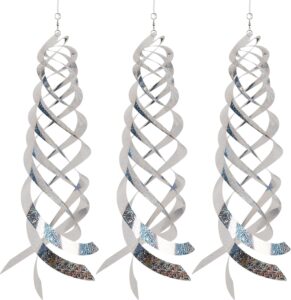
Spinning Reflectors
- Movement and reflection create dual deterrent
- Solar-powered options require no maintenance
- 360-degree protection radius
- Weatherproof and durable
3. Sound Deterrents: Acoustic Solutions
Sound-based deterrents use sparrows’ sensitive hearing to create an uncomfortable or threatening environment. These devices emit sounds that sparrows perceive as warnings or predator calls, encouraging them to seek safer locations.
Effective Sound Deterrents for Sparrow Control
- Ultrasonic Devices: Emit high-frequency sounds that disturb sparrows but are inaudible to humans. Most effective in enclosed spaces like garages or warehouses.
- Distress Call Broadcasters: Play recordings of sparrow distress calls, signaling danger to other sparrows. Most effective during early infestation stages.
- Predator Calls: Broadcast hawk, owl, or other predator calls to create a sense of danger. Should be varied to prevent habituation.
- Sonic Cannons: Produce loud, startling sounds at random intervals. Best for agricultural and large commercial settings away from residential areas.
4. Trapping Methods: Physical Removal
Trapping is one of the most direct approaches to sparrow control and can be highly effective when implemented correctly. For persistent sparrow problems, humane trapping provides a method to physically remove the birds from your property.
Tomahawk Rigid Double Door Sparrow Trap
Best TrapHow Does It Work
How to Use
- Place the trap near known sparrow feeding or gathering areas
- Bait with white millet, bread crumbs, or cracked corn
- Pre-bait the area for several days before setting the trap
- Check the trap at least twice daily
- Release non-target birds and relocate or humanely dispatch captured sparrows
- Captures multiple birds with one setting
- Durable construction for years of use
- Humane capture method with minimal stress to birds
- Includes side door for easy removal of trapped birds
- More expensive than other trapping options
- Requires regular monitoring
- Birds may become trap-shy over time
- Not selective - may capture non-target bird species
Additional Trap Options
| Trap Type | Best For | Effectiveness | Ease of Use |
|---|---|---|---|
| Bird-B-Gone Two-Chamber Trap | Commercial settings, large infestations | High | Moderate |
| Kness Kage-All Live Animal Trap | Residential use, smaller spaces | Medium | High |
| Birdhouse-Style Traps | Discrete trapping in visible areas | Low-Medium | High |
| Net Traps | Agricultural settings, large open areas | Medium-High | Low |
Effective Sparrow Trapping Techniques
- Pre-baiting: Place bait in and around the trap for several days before activating it to reduce trap shyness.
- Proper Placement: Position traps in areas with high sparrow activity, such as near feeders, water sources, or known nesting sites.
- Optimal Timing: Early morning and late afternoon are peak feeding times when sparrows are most likely to enter traps.
- Effective Baits: Use white millet, cracked corn, bread crumbs, or commercial bird seed mixtures to attract sparrows.
- Decoy Birds: Using a “call bird” (a live sparrow in a separate compartment) can significantly increase trap effectiveness.
5. Habitat Modification: Make Your Property Less Attractive
One of the most sustainable long-term approaches to sparrow control is modifying your property to make it less appealing to these pest birds. By eliminating food, water, and shelter sources, you can discourage sparrows from visiting or nesting on your property.
Food Source Management
Remove bird feeders or switch to nyjer seed feeders that sparrows don’t prefer. Clean up spilled seed and secure trash containers.
Water Control
Eliminate standing water sources or make them inaccessible to sparrows. Fix leaky faucets and ensure proper drainage around buildings.
Nest Site Elimination
Seal potential nesting cavities in buildings and remove old nests during non-breeding season (when empty).
Vegetation Management
Trim dense shrubs and ivy that provide roosting sites. Consider replacing seed-bearing plants with species that don’t attract sparrows.
Pro Tips for Effective Habitat Modification
- Install specialized feeders with weight-activated mechanisms that close when heavier sparrows land
- Use safflower or nyjer seed that sparrows typically avoid but attracts desirable songbirds
- Install bird feeding stations at least 15 feet from buildings to minimize nesting opportunities
- Combine habitat modification with exclusion methods for comprehensive prevention
6. Chemical Deterrents: Taste and Tactile Aversion
Chemical deterrents work by making areas unpleasant or uncomfortable for sparrows to land on or nest in. These products can be effective when physical barriers aren’t practical or when sparrows have established persistent roosting patterns.
Types of Chemical Deterrents
- Avian Repellent Gels: Create sticky, uncomfortable surfaces that sparrows avoid. Best for ledges, signs, and air conditioning units.
- Taste Aversion Products: Make seeds and food sources unpalatable, discouraging sparrows from feeding in treated areas.
- Methyl Anthranilate Sprays: Natural grape extract that irritates birds’ trigeminal nerves but is harmless to humans. Useful for lawns and gardens.
- Optical Gels: Appear as fire to birds’ UV-sensitive vision while being nearly invisible to humans. Effective on limited surface areas.
7. Professional Bird Control Services
For severe infestations or when DIY methods aren’t producing results, professional bird control services offer expertise, specialized equipment, and integrated approaches to sparrow management.
When to Consider Professional Services
- Large-Scale Infestations: When dealing with hundreds of sparrows or multiple nesting sites.
- Commercial Properties: Warehouses, agricultural settings, or food processing facilities requiring specialized approaches.
- Difficult-to-Access Areas: When nests or roosting sites are in dangerous or hard-to-reach locations.
- Failed DIY Attempts: When multiple control methods have been implemented without success.
What Professional Services Offer
- Comprehensive Assessment: Identify all access points, nesting sites, and behavior patterns specific to your situation.
- Customized Control Plans: Develop integrated approaches tailored to your property and the severity of your sparrow problem.
- Specialized Equipment: Access to industrial-grade exclusion materials, advanced trapping systems, and commercial repellents.
- Ongoing Monitoring: Regular follow-up to ensure continued effectiveness and address any new issues.
- Legal Compliance: Knowledge of local regulations regarding bird control and proper disposal methods.
Creating an Integrated Sparrow Management Plan
For most situations, a combination of methods will prove most effective for long-term sparrow control. Here’s a step-by-step approach to developing a comprehensive management plan:
- Assessment: Identify where sparrows are nesting, feeding, and roosting on your property. Document patterns of activity and the extent of the infestation.
- Exclusion: Begin by implementing physical barriers to prevent access to buildings, vents, and other structures. This forms the foundation of your control strategy.
- Deterrence: Deploy visual and sound deterrents in areas where sparrows gather. Rotate and reposition these regularly to prevent habituation.
- Trapping: For established populations, implement a trapping program focusing on areas with highest sparrow activity. Check traps regularly.
- Habitat Modification: Make your property less hospitable by eliminating food, water, and shelter sources that attract sparrows.
- Maintenance: Regularly inspect exclusion devices, replace worn deterrents, and continue monitoring for new sparrow activity.
- Adaptation: Adjust your approach based on results, focusing more resources on methods proving most effective for your specific situation.
Frequently Asked Questions
Are house sparrows protected by law?
No, house sparrows (Passer domesticus) are not protected by federal law in the United States as they are non-native invasive species. They are specifically excluded from protection under the Migratory Bird Treaty Act.
However, it’s important to verify local regulations as some municipalities may have additional ordinances regarding bird control methods. Always use humane methods and ensure proper identification, as native sparrow species ARE federally protected.
What’s the best time of year to implement sparrow control?
The most effective time to begin sparrow control is in late winter or early spring, before the breeding season begins. This timing allows you to prevent nesting and break the reproductive cycle before populations increase.
Once sparrows have established nests with eggs or young, control becomes more challenging and some methods may need to be delayed. Year-round maintenance and deterrence are important for preventing reinfestation after initial control efforts.
How can I attract native birds while discouraging house sparrows?
Several strategies can help support native birds while deterring house sparrows:
- Use feeders designed to exclude larger birds like house sparrows, such as tube feeders with short perches
- Offer foods that house sparrows don’t prefer but native birds enjoy, like safflower seeds, nyjer thistle, or suet
- Provide nesting boxes with entrance holes smaller than 1 1/4 inches, which allows access for smaller native birds but excludes house sparrows
- Install “sparrow-spooker” devices on bluebird houses to deter house sparrows without affecting bluebirds
- Plant native vegetation that provides natural food sources and shelter for native bird species
Can I use poison to control sparrow populations?
The use of poisons (avicides) for sparrow control is generally not recommended for several important reasons:
- Avicides pose significant risks to non-target wildlife, pets, and potentially humans
- Poisoned birds may be consumed by predators, risking secondary poisoning
- Many avicides require special licensing and permits for use
- Poisoned birds often die in inaccessible areas, creating odor problems and health hazards
- More humane and targeted control methods are available and typically more effective for long-term management
Instead, focus on exclusion, trapping, habitat modification, and deterrents for safer, more effective sparrow control.
How do I prevent sparrows from taking over birdhouses intended for native species?
To protect nest boxes for native species from house sparrow takeovers:
- Use entrance holes smaller than 1 1/4 inches for species like bluebirds (house sparrows need slightly larger openings)
- Install “sparrow-spookers” (hanging streamers or monofilament lines) above nest box entrances
- Monitor boxes regularly and remove house sparrow nesting materials before eggs are laid
- Place nest boxes away from areas with high house sparrow activity, such as near feeders or buildings
- Consider specialized nest boxes with side entrances rather than front-facing holes
- Install boxes in natural habitats preferred by native species rather than in highly urban settings
Consistent monitoring is crucial, as house sparrows can be persistent in their attempts to claim nest boxes.
Conclusion: Keys to Successful Sparrow Control
Effective sparrow management requires patience, persistence, and an integrated approach combining multiple control methods. Focus on these key principles for the best results:
House sparrow control is most successful when you combine exclusion methods to prevent access to buildings, deterrents to make your property unappealing, trapping to reduce existing populations, and habitat modifications to discourage future infestations. Remember that consistent application of multiple techniques will yield better results than relying on any single method.
Best Practices for Long-Term Success
- Early Intervention: Address sparrow problems at the first signs of activity, before they establish nesting colonies.
- Comprehensive Approach: Use multiple control methods simultaneously rather than relying on a single technique.
- Consistency: Maintain control efforts consistently throughout the year, adjusting strategies seasonally.
- Adaptability: Monitor results and be willing to adjust your approach based on what works best for your specific situation.
- Prevention: After achieving initial control, focus on preventive measures to avoid reinfestation.
By implementing the comprehensive strategies outlined in this guide, you can effectively manage house sparrow populations on your property while minimizing damage and supporting native wildlife. With persistence and the right combination of methods, a sparrow-free environment is achievable.
Have you successfully dealt with sparrow problems on your property? Share your experiences and tips in the comments below to help other readers facing similar challenges!
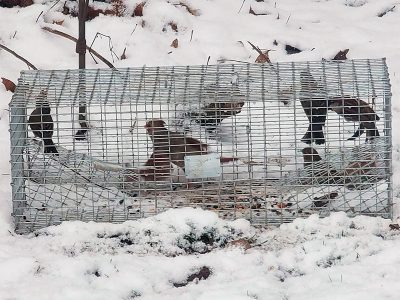

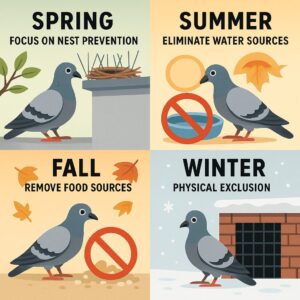
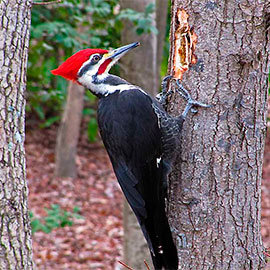

I have used the sparrow traps and the sparrows become smart to it and stay away from it, so what else is there, I am very frustrated and have tried shooting them with a bb gun, but the minute I move to aim the bird flies off!!!!!
Sparrow “Trap Door” with MP3 bird call catches sparrows in 2 minutes.
The other traps require days or weeks of pre-baiting. Who has time to wait for that when more advanced traps are now on the market?
2 minute catch here:
Where do I get one? does it also trap females?
Bird barrier sells them – and yes they trap males and females.
Too many traps to pick from. Need to eliminate these destructive bluebird/native songbird killers from my farm. Won’t they capture good sparrows as well? I want to protect my bluebirds an have plunked some house sparrows with my pelleted airgun. Thanks, Gail.
I use the Sparrow Trap Door with good success for interior bird control in our large, multi-cultural themed grocery store. The bird call brings one to the trap in a short time. If there are more sparrows to catch I can use the sparrow I just caught as a decoy bird in a repeating trap like the one 2 traps up from the bottom. The decoy then can bring in all the rest of the sparrows.